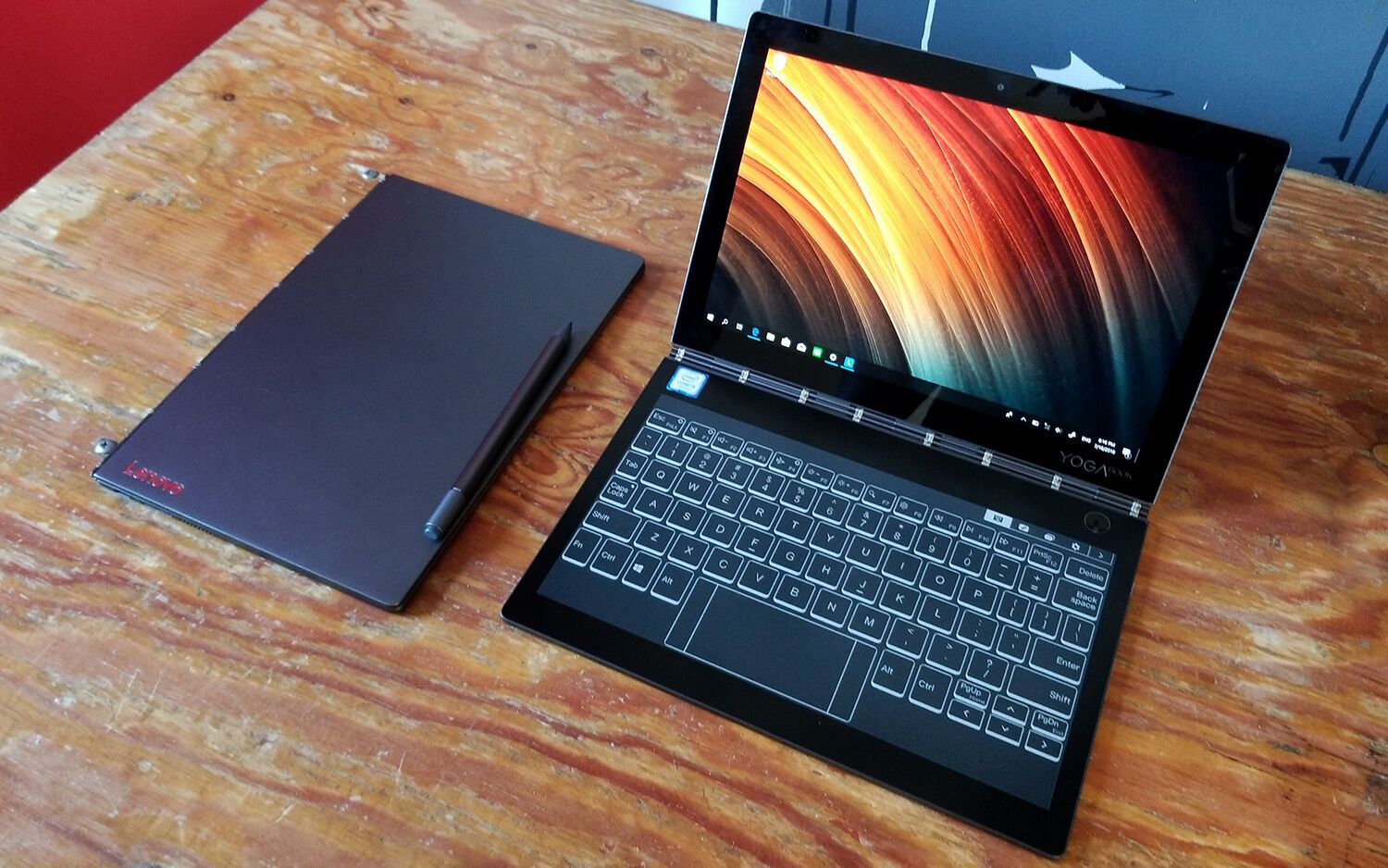Lenovo’s New Yoga Book C930 Sports an E Ink Screen, Higher Price
Despite a record of commercial success that could be generously described as “limited,” big-name PC makers keep trying to make dual-screened laptops a thing.
Lenovo’s latest attempt, the Yoga Book C930 (not to be confused with the new non-book Yoga C930), at least offers up some interesting innovation. A followup to the original Yoga Book (but don’t call it the Yoga Book 2), the C930 is a Windows 10-only device, and has a slightly larger 10.8-inch primary display (versus 10.2 inches on the original). It also ditches the lower “Create Pad” screen on the original model for an E Ink secondary display that, along with the help of haptic feedback, doubles as they laptop’s keyboard when you need to type. There’s also an included powered Bluetooth-based Wacom pen which works on both screens, though there’s no place to stow it in the device’s 0.39-inch-thick frame. It snappes to the laptop magnetically.
The new Yoga Book C930, which Lenovo says will be available in October starting at $999, is clearly a more premium device than the previous version, weighing in at 1.7 pounds with a high-res 2560 x1600 LCD screen (1920 x 1080 on the lower E Ink panel). But use of last-generation Y-series CPUs (Core m3-7y30 or Core i5-7Y54) doesn’t exactly scream premium performance PC. And the 4GB of LPDDR3 that’s the only listed memory option is tough to swallow, especially given the high starting price. Storage is also listed as “up to” a 256GB PCIe SSD, and LTE connectivity is also included.
One other interesting feature is “knock-to-open,” which is designed to make the convertible easier to open, since it’s so thin and there’s no cut-out notch for easy lifting of the lid. Double tap the lid of the Yoga Book C930 and the device springs open a few inches, letting you then easily adjust the top screen to whatever angle you want (or of course fold it over backwards). It’s an interesting feature that worked well in our brief hands-on time. But we wonder how rugged and / or easily triggered knock-to-open is. We hope it won’t result in the device popping open unexpected in a backpack or bag.
Battery life for the new Yoga Book is listed as “up to 8.6 hours,” which seems rather low for a device with an E Ink screen and a low-power processor, but the Yoga Book C930 is quite thin and light. We spent a few minutes at a press event typing on the C930’s E Ink screen, and while we’d have to spend more time with it to pass final judgement, we weren’t exactly enthused about the experience. But for those used to tapping out messages on smartphones and tablets, who don’t write all that much, it might be sufficient.
While we’re enthused to see Lenovo trying something new with its latest Yoga Book, the C930 faces the same issue as most multi-function devices: You could probably get a better-performing ultrabook (with a physical keyboard more RAM) and a separate Kindle (or other e-reader of your choice) for less money than the $999 starting price of the Yoga Book C930.
Get Tom's Hardware's best news and in-depth reviews, straight to your inbox.
After a rough start with the Mattel Aquarius as a child, Matt built his first PC in the late 1990s and ventured into mild PC modding in the early 2000s. He’s spent the last 15 years covering emerging technology for Smithsonian, Popular Science, and Consumer Reports, while testing components and PCs for Computer Shopper, PCMag and Digital Trends.
-
kapler Have you seen the prices for 10'' e-ink readers with pen support? Just this is worth the price. And 770 g (incl. keyboard) convertible windows 10 notebook with "adult" processor? This has no competition.Reply -
seiikichan I just wish they would stop calling it a laptop. It gives people the wrong impression.Reply -
dalauder I'm not totally clear on how big their target audience is for this (who want premium devices, need an e-ink touchscreen, AND don't care about hardware speed?), but it's really awesome. I hope it sells well and this kind of stuff becomes mainstream.Reply



